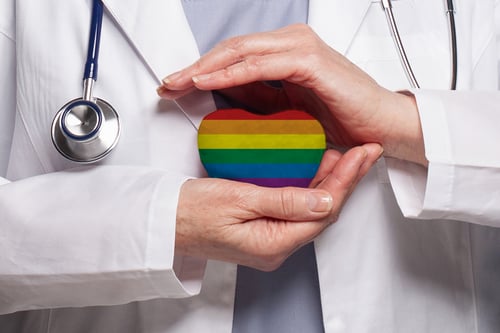In the ongoing fight against HIV, prevention remains a critical aspect of maintaining public health. PrEP (pre-exposure prophylaxis) and condoms are two popular methods for reducing the risk of HIV transmission. In this blog post, we will discuss these methods, their safety, effectiveness and how to access PrEP in Hong Kong to ensure you make informed decisions about your sexual health.
What is PrEP (Pre-Exposure Prophylaxis)?
Pre-exposure prophylaxis, or PrEP, is an HIV prevention drug that involves taking daily medication to reduce the risk of contracting HIV. The medication works by blocking the virus's ability to establish an infection in the body. When taken consistently and as prescribed, PrEP is highly effective at preventing HIV transmission, reducing the risk by up to 99%1.
Two approved PrEP medications are in Hong Kong: Truvada and Descovy. Both medicines have demonstrated high levels of effectiveness in clinical trials, although Descovy is not recommended for individuals at risk of HIV through receptive vaginal sex2.
Condom Effectiveness in HIV Prevention
Condoms are widely used as a physical barrier to prevent the transmission of HIV and other sexually transmitted infections (STIs). When used correctly and consistently, condoms can be up to 99.5% effective in preventing HIV transmission3. Condoms also protect against other STIs, such as chlamydia, gonorrhoea, and syphilis, in addition to HIV.
While condoms are an essential tool in HIV prevention, they are not without limitations. Condoms may occasionally break or slip off during sexual activity, reducing their effectiveness. Furthermore, they rely on consistent and correct use to provide optimal protection.
Comparing PrEP and Condoms: Safety and Effectiveness
PrEP and condoms both play significant roles in HIV prevention, but their safety and effectiveness vary depending on individual circumstances.
PrEP
- Highly effective when taken consistently and as prescribed (up to 99% reduction in HIV risk)
- Provides continuous protection, regardless of when sexual activity occurs
- Requires regular monitoring and prescription by a healthcare professional
- It does not protect against other STIs
Condoms
- Effective when used correctly and consistently (up to 98% reduction in HIV risk3)
- Protects against HIV and other STIs
- Requires correct use during each sexual encounter
- May break or slip off, reducing the effectiveness
In certain situations, PrEP may be more suitable than condoms, particularly for individuals at a higher risk of HIV exposure. For instance, those with an HIV-positive partner, a history of inconsistent condom use, or engaging in sex work may benefit from PrEP's continuous protection.
However, it is essential to remember that condoms are still necessary for preventing other STIs and for comprehensive protection, a combination of PrEP and condoms is recommended.
HIV Risk Reduction: Integrating PrEP and Condoms
A comprehensive approach to HIV prevention should include both PrEP and condoms. By using PrEP consistently and correctly, individuals can significantly reduce their risk of HIV transmission. Additionally, using condoms during sexual encounters helps protect against other STIs and further minimises the risk of HIV.
Other safer sex practices to consider include regular testing for HIV and other STIs, open communication with partners about sexual health, and reducing the number of sexual partners.
Accessing PrEP in Hong Kong
PrEP is available in Hong Kong through private healthcare providers. To access PrEP, you will need a prescription from a qualified healthcare professional. This process typically involves an initial consultation, HIV testing, and kidney function tests to ensure PrEP is safe and appropriate for you.
Once prescribed, you will need to have regular follow-up appointments for HIV testing, STI screening, and monitoring of kidney function.
Adequate sex education knowledge and understanding of the differences between PrEP and condoms, as well as their respective roles in HIV prevention, is crucial for making informed decisions about your sexual health. While PrEP offers significant protection against HIV, it is essential to continue using condoms for comprehensive protection against other STIs.
To determine the best approach for your individual needs, consult with a healthcare professional. They can provide guidance on PrEP, condoms, and other strategies for maintaining optimal sexual health.
References
(1) HIV GOV. Pre-Exposure Prophylaxis. Retrieved Feb 6, 2025, from https://www.hiv.gov/hiv-basics/hiv-prevention/using-hiv-medication-to-reduce-risk/pre-exposure-prophylaxis
(2) FDA. FDA approves second drug to prevent HIV infection as part of ongoing efforts to end the HIV epidemic. Retrieved May 17, 2023, from https://www.fda.gov/news-events/press-announcements/fda-approves-second-drug-prevent-hiv-infection-part-ongoing-efforts-end-hiv-epidemic
(3) Aidsmap. Condoms. Retrieved May 17, 2023, from https://www.aidsmap.com/about-hiv/condoms
 Central General Practice
Central General Practice
 Repulse Bay
Repulse Bay
 Clearwater Bay
Clearwater Bay
 BodyWorX Clinic
BodyWorX Clinic
 Central Specialist Clinic
Central Specialist Clinic
 MindWorX Clinic
MindWorX Clinic
 Partner Clinics
Partner Clinics
 Family Clinic
Family Clinic
 OT&P Annerley Midwives Clinic
OT&P Annerley Midwives Clinic






